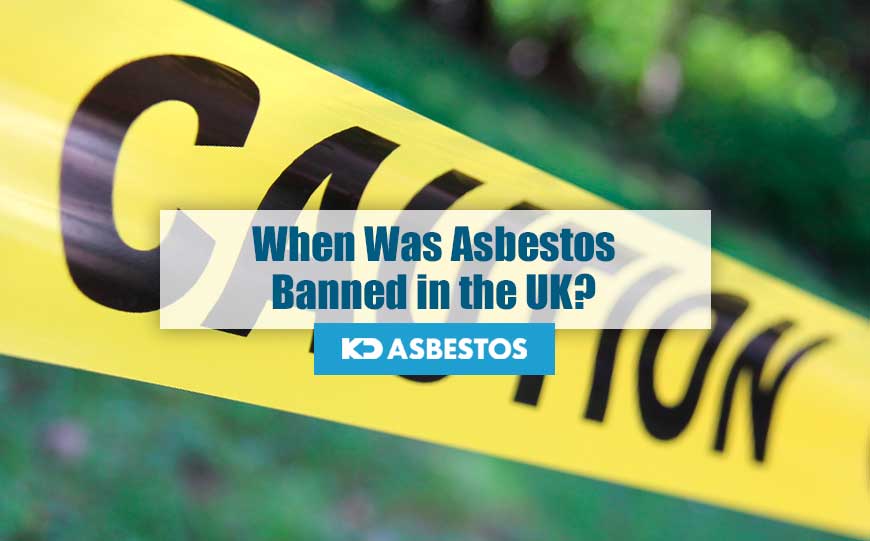
Did you know that the UK has one of the highest rates of mesothelioma among other countries in the world?
Unfortunately this is due to the fact that the UK government allowed for asbestos to be used for several years after it was prohibited by law in other countries.
In the following sections, we explore more about asbestos, why it is dangerous and answer the burning question – when was asbestos banned from general use in the UK?
Table of Contents
What is Asbestos?
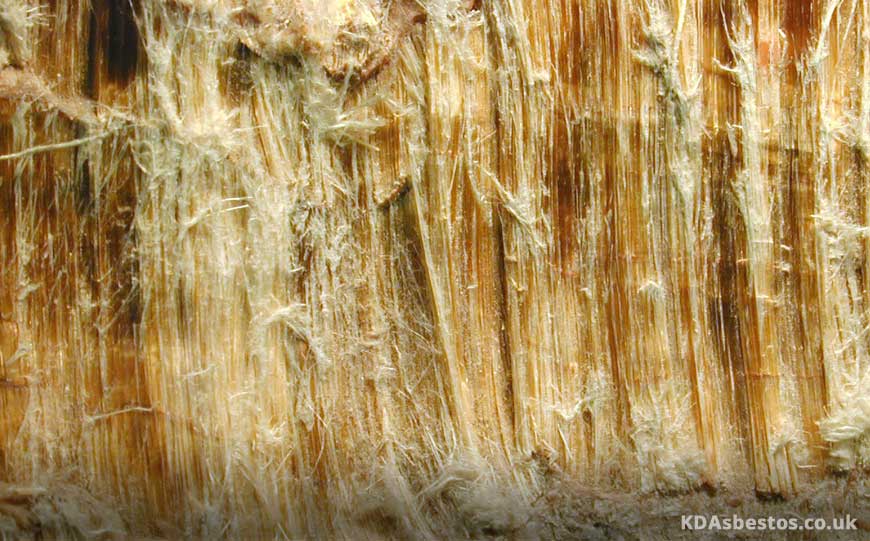
Asbestos is the term used to refer to the various naturally occurring minerals, which form fibres once they crystallise.
The asbestos fibres do not dissolve when they come in contact with water, and they do not evaporate.
They are also highly resistant to fire and heat.
Being chemically and mechanically strong, asbestos was widely used in construction and manufacturing.
There are many types of asbestos, which are divided into two main families:
- Serpentine
- Amphiboles
The former, which is also referred to as white asbestos or chrysotile was used most in manufacturing.
The fibres in this type are soft and flexible.
They are less dangerous than the amphibole fibres, which are brittle and have a needle-like appearance.
Asbestos is not considered to be hazardous when it is in large pieces and not damaged.
However when it is damaged in some way or other, small fibres are released.
These can be inhaled or even swallowed by anyone in the vicinity.
It has been found that asbestos is carcinogenic to humans and it is responsible for the development of asbestosis, which is a condition which increases one’s susceptibility to cancer.
What is Asbestos Used For?
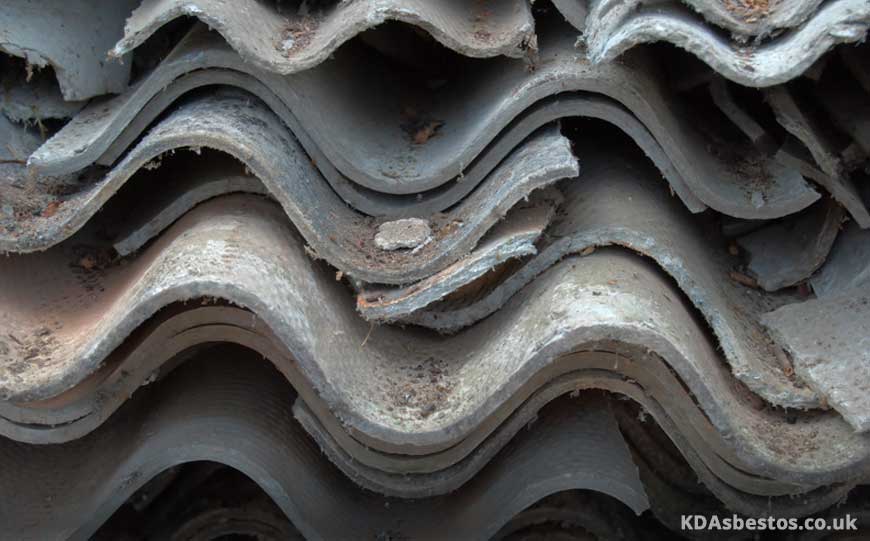
Asbestos was used in many materials and products, as well as construction.
From insulation materials for buildings and pipes, to boilers, car brakes, roofing materials and floor tiles – you can find asbestos in so many different places!
The reason for the varying uses lies with the fact that asbestos is an ideal material due to its resistance and strength.
Why Is Asbestos Dangerous?
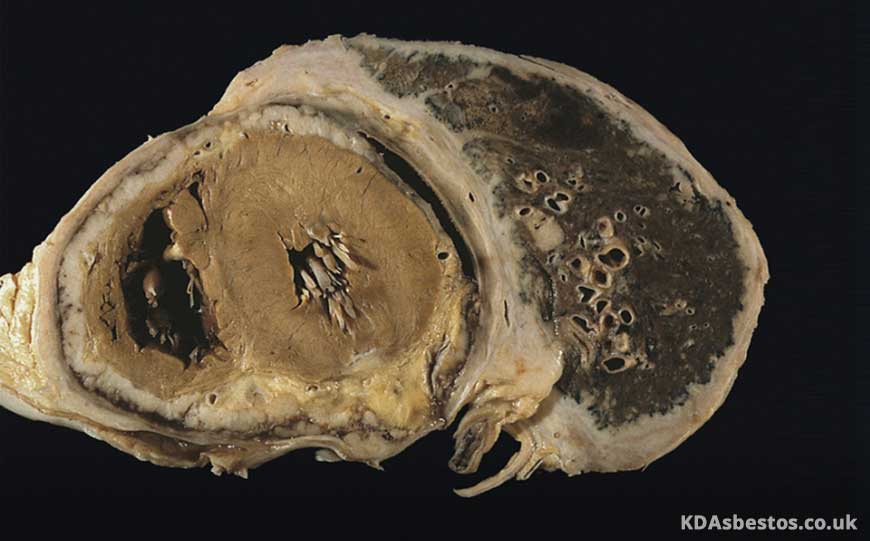
When asbestos is damaged or disturbed, tiny fibres are released into the air which are highly dangerous to one’s health when inhaled.
These fibres remain suspended in the air, so they can be inhaled by anyone in that area.
People may also swallow these fibres in cases where asbestos makes its way onto soil, vegetation or a water source.
Asbestos fibres can make their way into water after eroding from natural sources like asbestos cement.
However, the most common danger lies in the inhalation of asbestos fibres.
Breathing in asbestos in high concentrations, especially for prolonged periods of time will adversely affect the lungs.
People suffering from the condition known as asbestosis have trouble breathing normally, and this leads to the enlargement of the heart.
Such patients are also at a much higher risk of developing cancer.
Asbestosis does not develop within a short period of time since the time when the initial exposure to asbestos occurred, so it can take decades to develop.
People who were exposed to low concentrations of asbestos are still prone to certain health problems.
This includes pleural thickening, which is the lining of the lungs.
Who’s At Risk From Asbestos?
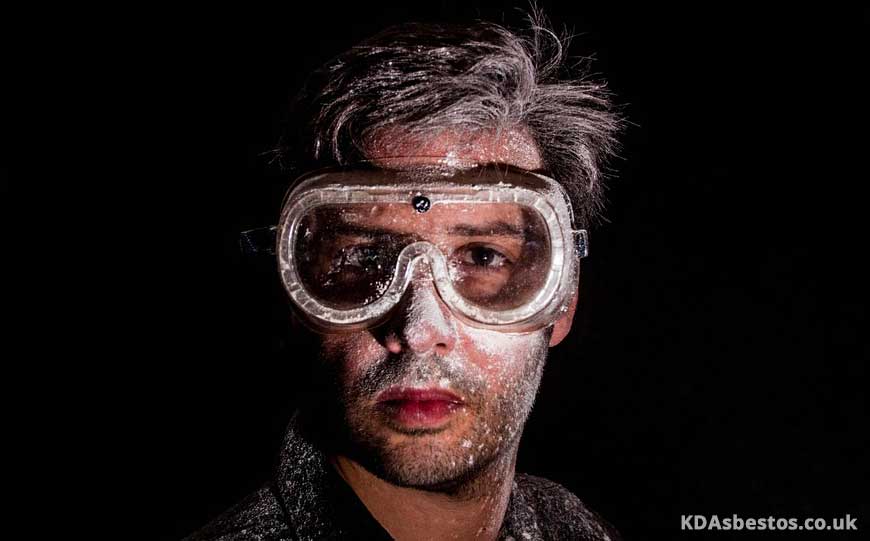
Unfortunately, it took a long time for asbestos to be banned in the UK.
This led to many people being exposed to it, particularly those who used to work in industries such as shipbuilding, construction, roofing, painting and decorating, demolition, plastering, plumbing and heating.
Other occupations which also faced a risk of exposure, but to a lesser extent included electricians, joiners, carpenters and boilermakers.
Unfortunately, those who worked in the shipbuilding industry before the 1980s were exposed to high concentrations of asbestos, as many ships used to be loaded with asbestos parts and asbestos insulation products.
Moreover, the risk of asbestos fibres getting airborne was very high whenever ships were repaired, maintained or retro-fitted.
Construction workers were another high risk group.
This is because asbestos was widely used in the construction industry.
Many old buildings and residences which were erected before the year 2000 came with a high probability of asbestos presence.
Asbestos was widely used in power plants, chemical plants, factories and refineries.
It was also present in homes and schools as well as commercial buildings and warehouses in the UK.
Sadly little thought was given to how dangerous asbestos really was.
Despite the fact that there had been scientific findings dating back decades, which suggested that it was potentially responsible for serious respiratory conditions, it was still used.
However it took several years before the real dangers of asbestos were taken seriously.
When Was Asbestos Banned?
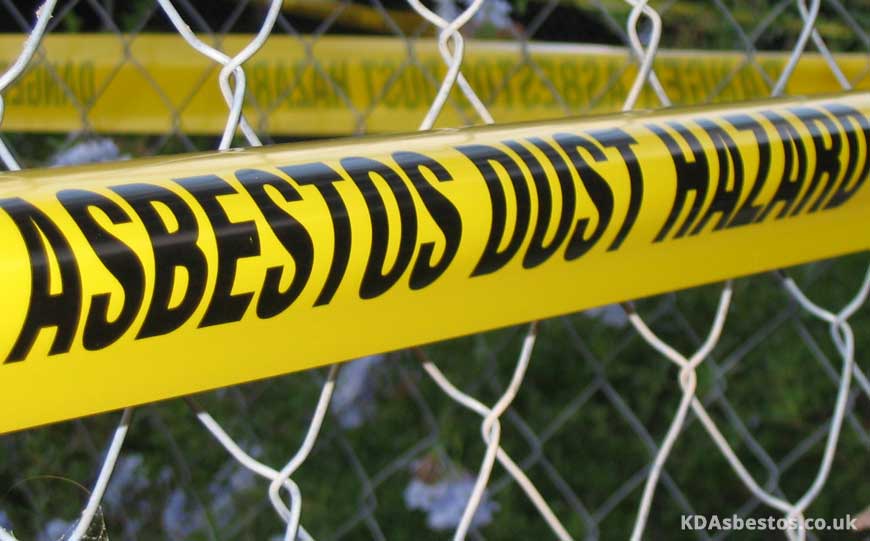
Sadly the UK’s asbestos era took a relatively long while to be brought to a halt.
The UK officially banned asbestos on the 24th August 1999.
This was just a month before the European Union banned chrysotile.
The Asbestos Prohibitions Regulations 1999 came into force on the 24th of November 1999.
Chrysotile was the only type of asbestos which was permitted in the UK, as both amosite and crocidolite had been banned back in 1985.
According to Statutory Instrument No. 2373 the importation of crude fibre, powder, flake or waste chrysotile was forbidden.
Moreover, the new use of any asbestos products such as asbestos cement, asbestos panels, asbestos boards and tiles, was also prohibited.
Any products which contain chrysotile which were installed before the 24th of November 1999 are allowed to remain in place until the time that they reach the end of their service life.
It is also stated that the sale of any second hand asbestos cement, or any building materials which are covered with coatings that contain asbestos, is also prohibited.
The sad truth is that many company owners and employers were aware of the dangers of asbestos.
However as long as there were no regulations in place until 1999, there were many who decided to unethically downplay the risks associated with it.
There was a considerable increase in mesothelioma cases during the second half of the 20th century in the UK, and it was then that the legislators started to take things seriously.
Asbestos Regulations
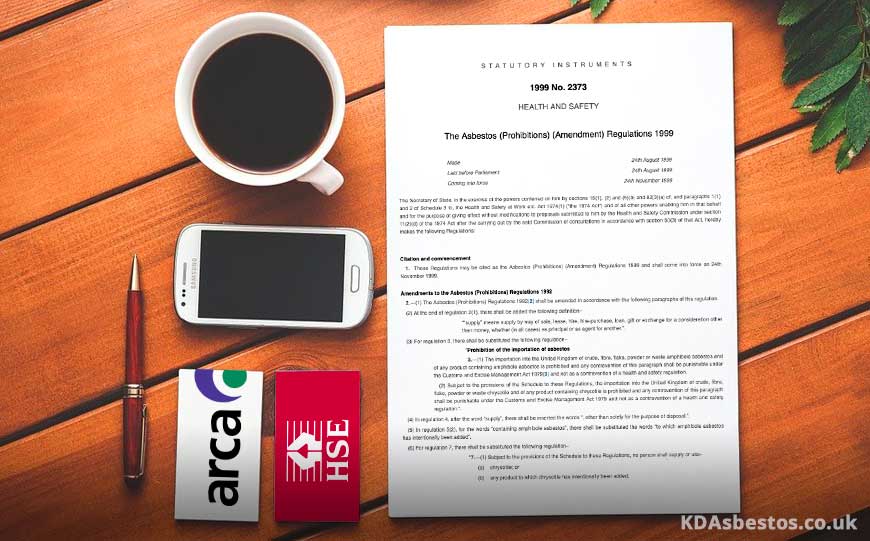
The first asbestos prohibition laws in the UK started to be introduced in the mid-1980s.
In fact, in 1985 there was a ban on both the import as well as the use of blue and brown asbestos.
These are technically referred to as crocidolite and amosite.
Fast forward to 1992, this rule was replaced with a ban which also included the prohibition of the use of white asbestos in some products.
Other asbestos related laws started to be passed during the 1990s.
These stipulated different aspects to control and eventually pave the way to ban it.
For instance, there was a requirement that any work carried out on asbestos insulation products could only be done by a licensed asbestos professional.
There were also regulations which set maximum exposure limits as well as the need to have all asbestos duly identified and managed in a safe and proper manner.
There were regulations which required all employees at risk of asbestos exposure to receive training in safety precautions that they should take.
Finally, the UK’s Control of Asbestos Regulations Act combined all such regulations in a single law.
This prohibited the use as well as the supply and importation of all kinds of asbestos.
Eventually the Control of Asbestos Regulations 2012 Act was updated to comply with the European Commission’s requirements.
Common Asbestos Products
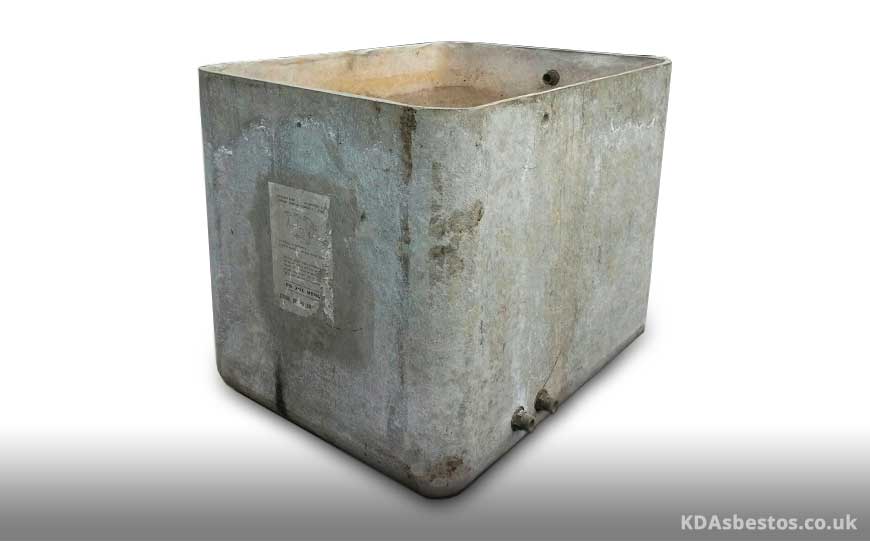
Many materials could contain asbestos, and sadly the list is a very long one.
One can find automotive products as well as all kinds of household products that contain asbestos.
From ovens, toasters and hairdryers, to brake pads and clutch facings in cars.
There were also textiles which contained asbestos, and all kinds of asbestos building products such as cement sheets, shingles, insulation, wallboards, tiles, siding and paint.
What To Do If You Find Asbestos
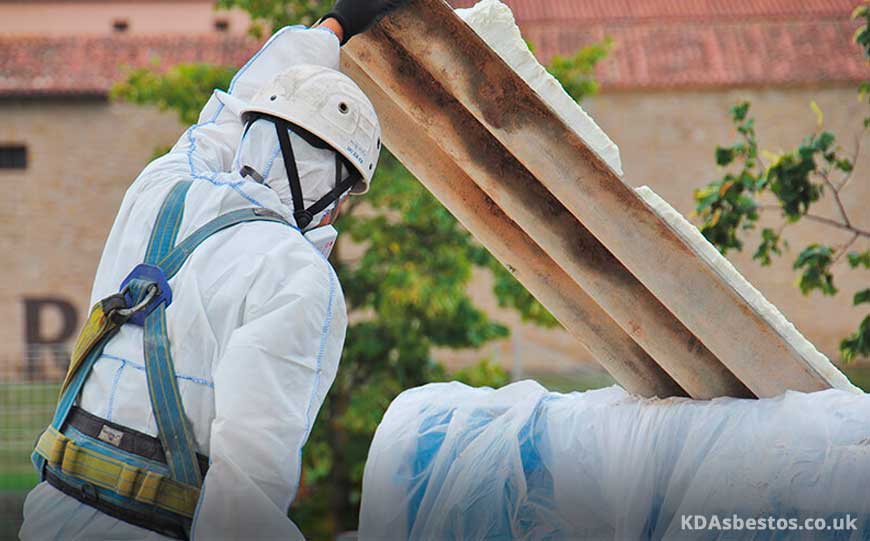
One can conclude that asbestos could well be present in any house or building, especially if it was built before the year 2000.
Since asbestos was used in so many building materials, there is a very high probability that it is present even in your house or place of work.
This does not mean that you need to panic.
It is important to reiterate that asbestos fibres are not dangerous unless they are not disturbed such as by demolitions and renovations.
Having said that, it is better to be careful as the dangers of asbestos have now been very well explained.
Should you need to carry out any work and you suspect that there could be asbestos present, it’s best to contact a licensed asbestos removal company that will know how to deal with the job.
In order to be safe, it is wise to have an asbestos sample tested to identify the presence of asbestos.
It’s also important to point out that all work involving asbestos needs to be performed by a licensed asbestos professional by law.
This kind of work will need to be carried out in accordance with an approved code of practice as stipulated in the Control of Asbestos Regulations.
Any plans that include the removal of asbestos must also be submitted to the HSE.
This needs to be done at least two weeks before the date when the work shall commence.
Conclusion
Other countries took action to ban asbestos much before the UK.
Unfortunately, it was only in the 1970s that it started to become evident that there was a significant rise in the cases of mesothelioma and asbestos related diseases in the UK.
It took several years for legislators to recognise the need to take action to try to control the use of asbestos, and eventually ban it.